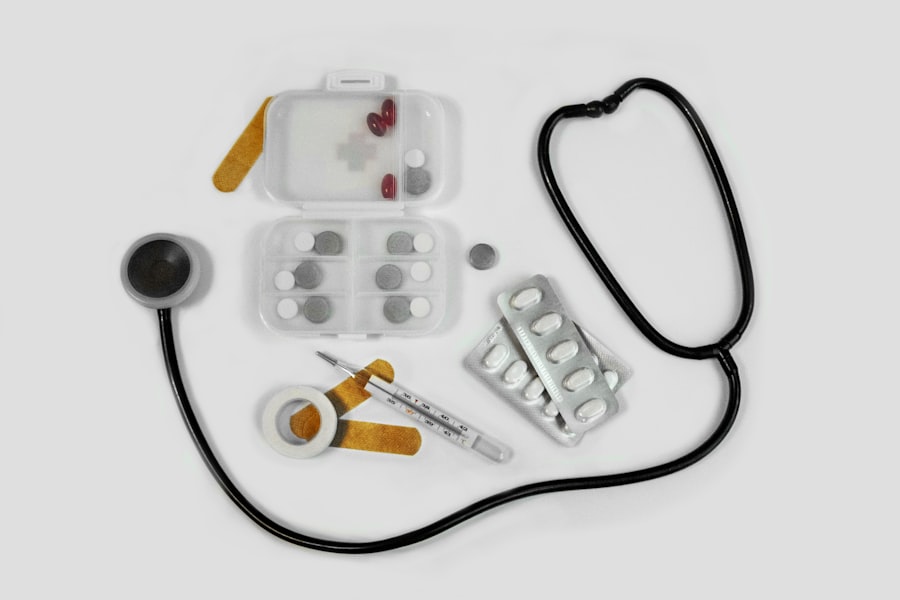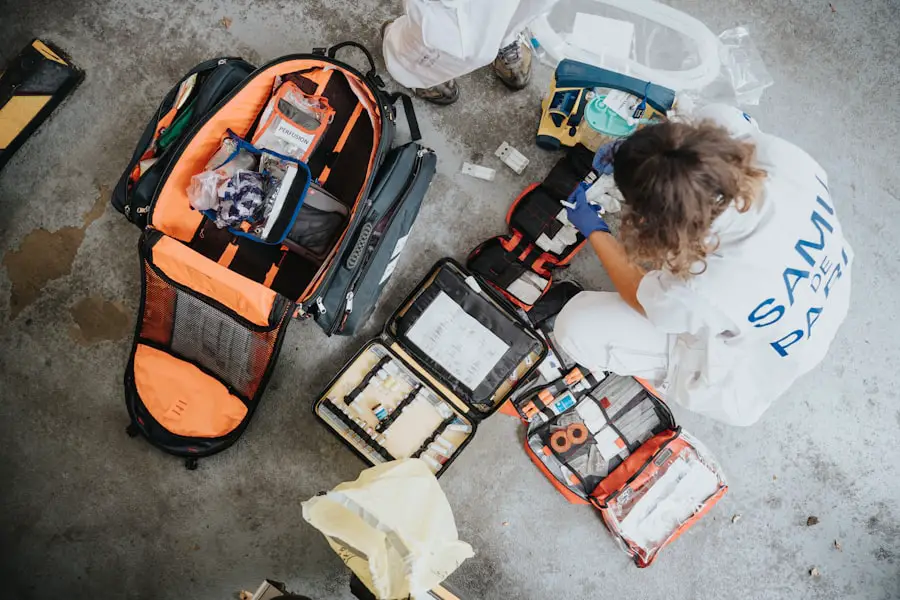When embarking on a hiking adventure, the significance of proper gear cannot be overstated. The right equipment not only enhances the overall experience but also plays a crucial role in ensuring safety and comfort on the trail. Hiking gear is designed to withstand various environmental conditions, provide support, and facilitate movement across diverse terrains.
Whether you are a seasoned hiker or a novice, investing in quality gear can make the difference between an enjoyable trek and a challenging ordeal. Moreover, proper hiking gear can help prevent injuries and fatigue. For instance, well-fitted footwear can reduce the risk of blisters and sprains, while appropriate clothing can regulate body temperature and wick away moisture.
The psychological aspect of being well-prepared cannot be ignored either; knowing that you have the right tools and equipment can boost confidence and allow hikers to focus on the beauty of nature rather than worrying about discomfort or potential hazards.
Key Takeaways
- Proper hiking gear is essential for comfort, safety, and enjoyment on the trail.
- When choosing a backpack, consider size, fit, and features to ensure it meets your needs.
- The debate between boots and trail runners for footwear depends on personal preference and the type of terrain.
- Layering clothing is key for comfort and protection from the elements while hiking.
- Navigation tools such as maps, compasses, and GPS devices are crucial for staying on course during a hike.
Backpacks: Choosing the Right Size and Fit
Selecting the right backpack is one of the most critical decisions a hiker will make. The size and fit of a backpack can significantly affect how comfortable a hiker feels during their journey. Backpacks come in various sizes, typically measured in liters, which indicates their capacity.
Daypacks, for short hikes, usually range from 15 to 30 liters, while multi-day backpacks can hold anywhere from 40 to 80 liters or more. It’s essential to choose a size that aligns with the length of your hike and the amount of gear you plan to carry. Fit is equally important; a poorly fitting backpack can lead to discomfort and even injury.
When trying on a backpack, it’s crucial to adjust the straps properly. The shoulder straps should sit comfortably on your shoulders without digging in, while the hip belt should rest on your hips to distribute weight evenly. Many outdoor retailers offer fitting services, allowing you to test different models with weights similar to what you would carry on your hike.
This hands-on approach ensures that you find a backpack that not only fits well but also meets your specific needs in terms of organization and accessibility.
Footwear is arguably one of the most vital components of hiking gear, as it directly impacts stability, comfort, and overall performance on the trail. Hikers often face the dilemma of choosing between traditional hiking boots and trail runners. Hiking boots are typically heavier and provide more ankle support, making them suitable for rugged terrains and long-distance hikes where stability is paramount.
They are often made from durable materials that offer protection against rocks, roots, and other obstacles. On the other hand, trail runners have gained popularity among many hikers due to their lightweight design and breathability. They allow for greater agility and speed, making them ideal for fast-paced hikes or running on trails.
However, they may not provide the same level of support as boots, particularly on uneven ground or when carrying heavy loads. Ultimately, the choice between boots and trail runners depends on personal preference, the type of terrain you will encounter, and the length of your hike. It’s advisable to try both options on various surfaces to determine which feels more comfortable and supportive for your specific needs.
Clothing: Layering for Comfort and Protection

The clothing you wear while hiking plays a crucial role in regulating body temperature and protecting against environmental elements. A layering system is often recommended for outdoor activities, as it allows hikers to adapt to changing weather conditions throughout their journey. The three primary layers include a base layer, an insulating layer, and an outer shell.
The base layer is designed to wick moisture away from the skin, keeping you dry during physical exertion. Fabrics such as merino wool or synthetic materials are popular choices for this layer due to their moisture-wicking properties and comfort against the skin. The insulating layer provides warmth and can be made from materials like fleece or down. This layer traps heat while still allowing moisture to escape. Finally, the outer shell protects against wind, rain, and snow.
Waterproof or water-resistant jackets with breathable membranes are ideal for keeping you dry without overheating. In addition to these layers, it’s essential to consider accessories such as hats, gloves, and gaiters. A wide-brimmed hat can shield your face from sun exposure, while gloves keep your hands warm in colder conditions.
Gaiters can protect your lower legs from mud and debris when traversing through overgrown trails or wet environments. By carefully selecting each layer and accessory, hikers can ensure they remain comfortable and protected throughout their adventure.
Navigation: Maps, Compass, and GPS Devices
| Navigation Tool | Accuracy | Battery Life | Portability |
|---|---|---|---|
| Maps | Dependent on scale and updates | N/A | Requires physical map |
| Compass | Dependent on calibration | N/A | Small and portable |
| GPS Devices | Highly accurate | Varies by device | Portable |
Navigating through unfamiliar terrain is an essential skill for any hiker. While modern technology has introduced GPS devices and smartphone applications that provide real-time navigation assistance, traditional methods such as maps and compasses remain invaluable tools in outdoor navigation. Understanding how to read topographic maps is crucial; these maps provide detailed information about elevation changes, terrain features, water sources, and trails.
A compass complements map reading by helping hikers orient themselves in relation to their surroundings. Learning how to use a compass effectively involves understanding concepts such as declination and how to take bearings. While GPS devices offer convenience with their ease of use and ability to track location accurately, they rely on battery power and may not function well in remote areas with limited signal coverage.
Therefore, carrying a physical map and compass as backup navigation tools is always advisable. In addition to traditional navigation tools, many hikers now utilize GPS devices that offer features such as route planning, waypoints, and tracking capabilities. These devices can enhance safety by allowing hikers to share their location with others or receive alerts if they stray off course.
However, it’s essential to familiarize yourself with any electronic device before heading out into the wilderness to ensure you can use it effectively when needed.
Water: Hydration Systems and Filtration Options
Carrying Water on the Trail
There are several options available for carrying water on the trail, including hydration packs, water bottles, and reservoirs integrated into backpacks. Hydration packs are popular among day hikers due to their convenience, often featuring a built-in bladder that allows for hands-free drinking through a tube while on the move. Water bottles are another common choice, easily refilled at water sources along the trail, but may require stopping to drink.
Water Filtration Options
In addition to carrying water, hikers must also consider water filtration options when accessing natural water sources such as streams or lakes. Portable water filters or purification tablets can effectively remove harmful bacteria and protozoa from water collected in the wild. Some hikers prefer using filter pumps or gravity filters that allow for larger quantities of water to be purified at once.
Ensuring Proper Functionality
Understanding how these systems work and ensuring they are functioning correctly before heading out is vital for maintaining hydration throughout your hike.
Nutrition: Lightweight and Nutrient-Dense Snacks

Proper nutrition is essential for sustaining energy levels during long hikes; therefore, packing lightweight yet nutrient-dense snacks is crucial for any outdoor adventure. High-energy foods that are easy to carry can help maintain stamina while minimizing pack weight. Options such as nuts, dried fruits, energy bars, jerky, and nut butter packets are excellent choices due to their compact size and high caloric content.
Nuts provide healthy fats and protein that can keep hunger at bay while offering sustained energy release during physical activity. Dried fruits add natural sugars for quick energy boosts along with essential vitamins and minerals. Energy bars come in various flavors and formulations; selecting those with whole food ingredients can provide both taste and nutrition without unnecessary additives.
Additionally, some hikers opt for homemade trail mixes that combine various ingredients tailored to personal preferences. This customization allows for control over nutritional content while ensuring that snacks remain lightweight and easy to pack. It’s also wise to consider meal planning for longer hikes; lightweight dehydrated meals can be rehydrated with hot water at camp for a satisfying dinner after a long day on the trail.
Safety: First Aid Kits and Emergency Supplies
Safety should always be a top priority when hiking in remote areas where access to medical assistance may be limited. Carrying a well-stocked first aid kit tailored to your specific needs is essential for addressing minor injuries or emergencies that may arise during your hike. A basic first aid kit should include items such as adhesive bandages, antiseptic wipes, gauze pads, adhesive tape, pain relievers like ibuprofen or acetaminophen, blister treatment supplies, and any personal medications required.
In addition to first aid supplies, it’s wise to carry emergency items such as a whistle for signaling help if lost or injured, a multi-tool for various tasks including repairs or food preparation, and a flashlight or headlamp with extra batteries for navigating after dark or during emergencies. A fire-starting kit can also be invaluable in survival situations where warmth or cooking may be necessary. Understanding how to use each item in your first aid kit is just as important as having one; consider taking a wilderness first aid course to gain practical skills in treating injuries in outdoor settings.
Familiarizing yourself with common hiking-related injuries—such as sprains or heat exhaustion—can also prepare you for potential situations that may arise during your adventure.
Shelter: Tents, Tarps, and Bivvy Sacks
When planning an overnight hike or camping trip, selecting an appropriate shelter is crucial for ensuring comfort and protection from the elements. Tents are the most common choice among campers due to their ability to provide adequate space for sleeping while offering protection against rain, wind, insects, and wildlife. Modern tents come in various designs—such as dome tents or tunnel tents—and materials that cater to different weather conditions.
For those seeking lighter options or minimalist setups, tarps offer versatility without the bulk of traditional tents. Tarps can be rigged in various configurations depending on weather conditions; they provide shelter from rain while allowing airflow during warmer nights. Bivvy sacks are another lightweight alternative designed primarily for solo hikers; these waterproof bags offer minimal protection but are easy to pack and set up quickly.
Regardless of the shelter type chosen, it’s essential to consider factors such as weight, ease of setup, durability against weather conditions, and space requirements based on group size when making your selection. Additionally, practicing setting up your shelter before heading out ensures familiarity with its components—this preparation can save valuable time when setting up camp after a long day on the trail.
Tools: Multi-Tools, Knives, and Repair Kits
Having the right tools on hand can make all the difference during a hiking trip; multi-tools and knives serve multiple purposes that can assist with everything from food preparation to gear repairs. A good multi-tool typically includes various functions such as pliers, screwdrivers, scissors, bottle openers, and knives—all compactly housed within one device—making it an invaluable asset for any hiker. Knives are equally important; whether used for cutting rope or preparing food at camp, having a reliable blade can enhance efficiency during outdoor activities.
When selecting a knife or multi-tool for hiking purposes, consider factors such as weight versus functionality—opt for lightweight options that still offer essential features without adding unnecessary bulk. In addition to personal tools like knives or multi-tools, carrying a small repair kit can help address unexpected issues with gear during your hike—this might include items like duct tape for quick fixes on tents or backpacks or spare parts for trekking poles or stoves. Being prepared with these tools not only enhances safety but also allows hikers greater flexibility in managing unforeseen challenges along their journey.
Leave No Trace: Pack it in, Pack it out, and Other Environmental Considerations
As outdoor enthusiasts venture into nature’s pristine landscapes, practicing Leave No Trace principles becomes increasingly important in preserving these environments for future generations. The core tenet of “pack it in, pack it out” emphasizes that all trash—including food scraps—should be removed from natural areas after use; this practice helps maintain cleanliness while protecting wildlife from ingesting harmful materials. In addition to waste management practices like packing out trash or leftover food items properly stored away from wildlife encounters—hikers should also consider minimizing their impact on trails themselves by sticking strictly to designated paths whenever possible; this helps prevent soil erosion while preserving native vegetation along routes frequented by foot traffic.
Furthermore—educating oneself about local regulations regarding campfires or wildlife interactions contributes significantly towards responsible outdoor behavior; understanding how best to respect wildlife habitats ensures that future visitors can enjoy these spaces just as much as current ones do today! By embracing Leave No Trace principles wholeheartedly—hikers not only enhance their own experiences but also contribute positively towards safeguarding our planet’s natural beauty!
When preparing for a hiking trip, it’s important to consider what essentials to bring along. In addition to items like water, snacks, and a first aid kit, it can also be beneficial to have a portable WiFi hotspot for international travel. This device can help you stay connected in case of emergencies or if you need to access maps or other online resources while on the trail. To learn more about the best portable WiFi hotspots for travel, check out this article.
FAQs
What are the essential items to carry while hiking?
Some essential items to carry while hiking include a map and compass, water and water purification system, extra food, extra clothing, a first aid kit, a multi-tool or knife, a headlamp or flashlight, and a fire starter.
What type of clothing should I carry while hiking?
It is important to carry moisture-wicking and quick-drying clothing while hiking. This includes a moisture-wicking base layer, insulating layer, and a waterproof and breathable outer layer. Additionally, it is important to carry extra clothing in case of changing weather conditions.
What kind of footwear is recommended for hiking?
Sturdy and comfortable hiking boots or shoes with good traction are recommended for hiking. It is important to choose footwear that provides ankle support and protection from rocks and debris on the trail.
Should I carry a first aid kit while hiking?
Yes, it is important to carry a first aid kit while hiking. The first aid kit should include items such as bandages, adhesive tape, gauze pads, antiseptic wipes, pain relievers, and any personal medications.
What kind of navigation tools should I carry while hiking?
It is important to carry a map and compass while hiking to help navigate the trail. Additionally, a GPS device or a smartphone with a GPS app can also be helpful for navigation.
Is it important to carry a water purification system while hiking?
Yes, it is important to carry a water purification system while hiking to ensure access to clean and safe drinking water. This can include water purification tablets, a water filter, or a portable water purifier.
